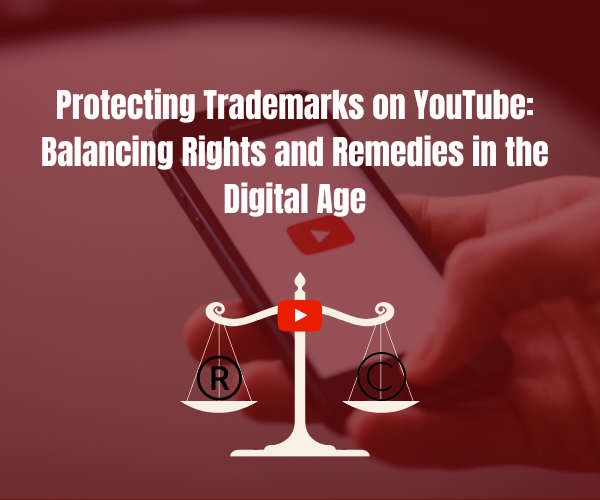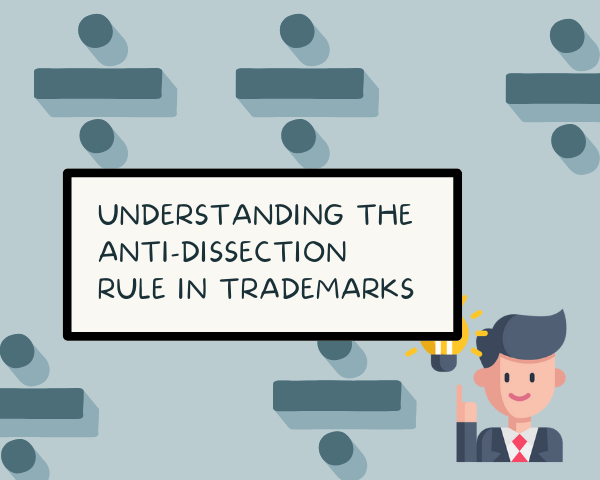Introduction
YouTube, the most popular video-sharing platform, and the second-largest search engine, has experienced enormous success through the years, especially in India. As of May 2023, it has been reported that India alone accounts for nearly 467 million YouTube users. This substantial demand makes it an appealing choice for companies and individuals. Furthermore, its user-friendly interface, which allows anyone with a Google account to start their own YouTube Channel adds to its popularity.
Since a YouTube Channel falls under the category of an entertainment service, it is eligible for trademark protection. Therefore, the logo, slogan, and YouTube Channel name which are used to promote a YouTube Channel can be registered as trademarks. Given YouTube’s aforementioned popularity, protecting brands from unauthorized use or reproduction on the platform becomes essential.
The benefits of trademark registration allow the ‘Trademark holder’ to enjoy the following benefits –
- Protection of the channel name, preventing competitors from stealing or using a similar version of the YouTube channel name.
- Since the brand value is often connected to YouTube Business, trademark registration increases the value of the YouTube brand.
- In the instance that someone has been using the same/deceptively similar YouTube Channel name, the trademark holder gains the right to pursue legal action against such individuals.
Find out more about how trademark helps to stand out in online platforms here.
It is also important to note that Trademark protection for the YouTube Channel name, logo or slogan will not extend to the protection of the channel’s content, such as videos or pictures. The protection solely applies to how the channel’s content is identified and promoted. Thus, a trademark of a YouTube channel will only prevent the public or direct competitors from using the branding materials that mislead consumers, specifically referring to the channel name or logo.
What constitutes a YouTube Trademark Infringement?
As per YouTube Help Services, the company defines trademark infringement as the “improper or unauthorized use of a trademark in a way that is likely to confuse the source of the product (YouTube audience).” When videos or channels infringe trademarks in a manner that causes confusion, it can lead to the infringing video being blocked and the suspension of such a channel.
Additionally, trademark infringement can also manifest in the form of “Username Squatting” which occurs when a third party (someone not affiliated with the trademark owner) creates a social media username which is either identical or deceptively similar to a brand owner’s trademark to use the social media platform (here YouTube) with a bad faith intent.
This bad faith intent refers to the following
- Complete impersonation of the brand;
- Masquerading as the individual;
- Holding the account hostage in exchange for money from the brand owner.
Some of the persistent issues stemming from ‘username squatting’ also include consumer confusion, reduced quality control of the goods and services, and reputational tarnishment.
Here are some examples to better understand ‘username squatting’ –
- Channels with the same name and image as another channel, with minute differences like insertion of space into the name or replacing some alphabetical characters like ‘O’ with ‘0’.
- The setting of a channel name using the name and image of a particular person and pretending to either comment or post content as if it were by them originally.
- Impersonating through real name, username, image, logo, or any other personal information to deceive the audience into believing that the impersonated content belongs to the brand owner.
What are the remedies for such infringement?
The YouTube platform provides a streamlined trademark infringement remedy process. While YouTube seeks to protect the IP rights of the trademark holder, they only provide a minimal investigation of the complaint. The primary focus of YouTube has been generally to remove the infringing content from its platform.
However, in addition to these limited measures, the trademark laws in India provide the following comprehensive remedies for trademark infringement.
- Claim for damages – In the cases of a trademark infringement, monetary damages sought by the injured party can generally be claimed from, the actual damages caused (loss of sales due to infringement), and the profit made by the infringer using the unauthorized trademark. Apart from this, punitive damages are to the extent that if the infringer is found guilty of committing the offence, then they are ordered to pay monetary damages above the compensatory damages as a way of punishment.
- Injunction – An injunction order is sought to mandate that the infringer cease any and all infringing activities, including the use of the infringing trademark. Through an infringement order, the court can direct the infringer
- Criminal Remedies – In response to an FIR filed against the infringing party, criminal remedies include imprisonment for six months which can be extended to a period of three years. A fine of rupees fifty thousand which can be increased to the extent of two lakhs.
Ashok Kumar Petitions – Legal remedy for unknown infringers.
The digital age has afforded individuals the privilege of maintaining their privacy while carrying out infringing activities. To tackle these challenges head-on, courts have introduced a legal mechanism known as the ‘Ashok Kumar’ petitions, commonly referred to as ‘John Doe’ Orders. This innovative approach enables affected parties to initiate ex-parte infringement proceedings against unidentified individuals since it is practically impossible for the trademark holder to identify all the infringing parties. The following cases provide an excellent example of the remedies provided by the courts in such petitions –
- Living Media Limited and Anr. V. AabTak Channel.com
Where the trademark of the well-known television channel ‘Aaj Tak’ was unauthorizedly used by almost anonymous 30 social network accounts, the Delhi High Court ordered several social media intermediaries like Google, Twitter, and Facebook to remove the infringing accounts from their platforms.
- Dabur India Limited (“Dabur”) v. Ashok Kumar & Ors.
Dabur is a well-known trademark in India and has been producing a large variety of products such as toiletries, food products, pharmaceuticals etc. Dabur filed a trademark infringement suit against various parties for using the Dabur mark unfairly by not just passing off as Dabur but completely impersonating Dabur by copying their trade dress, labels, logos, product packaging etc. The websites which unauthorizedly used the Dabur Trademark also redirected the viewer to the official website of Dabur which was a clear indication to impersonate Dabur and take an unfair advantage of their goodwill. To prevent further loss to Dabur’s goodwill the court ordered an ex parte injunction ordering the internet service providers to block such domain names.
Conclusion
The implementation of Ashok Kumar orders reflects a positive development in the legal landscape. By providing the infringed parties with means to confront infringing activities while upholding the principles of due process, these orders foster a more balanced and just environment for the resolution of trademark infringement cases.
The limited scope of grievance redressal offered by YouTube is overcome by the different grievance redressal mechanisms provided through the laws. It is clear that the protection of a trademark is essential for maintaining the goodwill of the brand. Trademark registration enhances the value of the YouTube brand, considering that the brand’s worth is often associated with the YouTube business.




